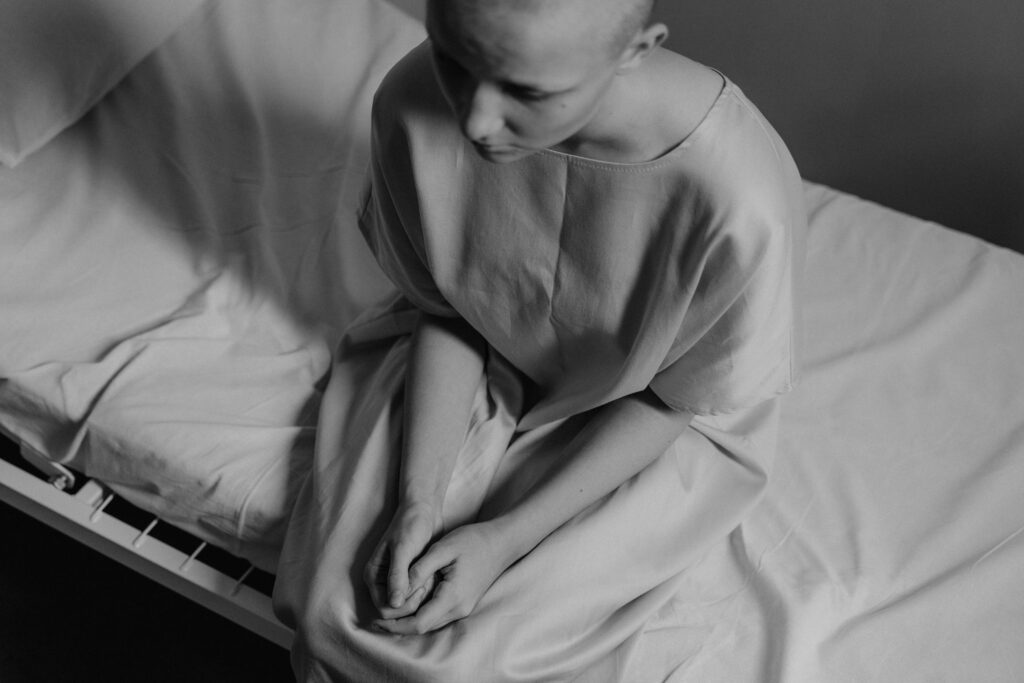Gastric cancer is a devastating disease that affects millions worldwide, and the discovery of new targeted therapies has been a game-changer in the fight against this deadly malignancy.

In a recent retrospective study, researchers have uncovered the remarkable potential of combining HER2 and PD-1 blockade in treating patients with HER2-positive gastric cancer. The findings suggest that this dual-targeted approach can significantly improve clinical outcomes, offering new hope for those battling this challenging disease.
Gastric Cancer: A Formidable Foe
Gastric cancer is a complex and aggressive form of cancer that originates in the stomach. It is a leading cause of cancer-related deaths globally, with an estimated 1.09 million new cases and 768,000 deaths reported in 2020 alone. The disease is particularly prevalent in certain regions, such as East Asia, and its prognosis can be grim, especially in advanced stages.
Unlocking the Secrets of HER2-Positive Gastric Cancer
One of the most significant breakthroughs in gastric cancer research has been the discovery of the role of human epidermal growth factor receptor 2 (HER2) in the disease. HER2 is a protein that plays a crucial part in the growth and spread of certain types of cancer, including gastric cancer. Approximately 20% of gastric cancer patients have tumors that overexpress HER2, making it an important biomarker and therapeutic target.
Harnessing the Immune System: The Promise of PD-1 Inhibitors
In recent years, the field of cancer immunotherapy has seen remarkable advancements, with the development of immune checkpoint inhibitors like PD-1 inhibitors. These therapies work by unleashing the body’s own immune system to recognize and attack cancer cells. PD-1 is a protein that acts as a “brake” on the immune system, and by blocking its activity, immune checkpoint inhibitors can help the immune system mount a more effective anti-tumor response.

The Power of Dual Blockade: Combining HER2 and PD-1 Inhibition
The latest study, led by a team of researchers from China, has shed new light on the potential of combining HER2-targeted therapy and PD-1 inhibition in the treatment of HER2-positive gastric cancer. The researchers retrospectively analyzed data from 72 patients with HER2-positive gastric cancer who received a combination of trastuzumab (a HER2-targeted monoclonal antibody) and a PD-1 inhibitor, with or without chemotherapy.
The results were quite remarkable. The overall response rate (ORR) for all patients was an impressive 54.2%, and for previously untreated patients, the ORR reached an even higher 79.4%. The median progression-free survival (PFS) was 10 months, and the median overall survival (OS) was 26.1 months, both of which are promising outcomes in the context of advanced gastric cancer.

Table 2 Efficacy of dual blockade of HER2 and PD-1 in each line of treatment in HER2-positive gastric cancer.
Unraveling the Synergistic Effects
The researchers believe that the synergistic effects of HER2 and PD-1 blockade can be attributed to several key mechanisms. First, while trastuzumab can activate the immune system and produce anti-tumor effects in the early stages of treatment, the sustained immunity may not last long. By combining trastuzumab with a PD-1 inhibitor, the researchers were able to harness the power of the immune system for a more durable response.
Additionally, the tumor microenvironment plays a crucial role in the modulation of the immune system during combination therapy. Gastric tumors with high HER2 expression tend to have lower proportions of immune cells and higher tumor purity, which can make them less responsive to the immune system. Trastuzumab has been shown to reshape the tumor microenvironment, increasing the presence of antitumor cytotoxic T cells and enhancing the secretion of interferon-gamma (IFN-γ) from natural killer cells. By combining trastuzumab with a PD-1 inhibitor, the researchers were able to further boost the immune response, leading to improved clinical outcomes.
Promising Safety Profile
Another notable aspect of the study was the favorable safety profile of the combination therapy. Only 25% of patients experienced grade 3 or 4 adverse events (which is lower than the rates reported in previous studies using similar combination regimens). This suggests that the dual blockade of HER2 and PD-1 can be administered with acceptable tolerability, further enhancing its potential as a viable treatment option for patients with HER2-positive gastric cancer.
Paving the Way for Future Advancements
While the findings of this retrospective study are highly promising, the researchers acknowledge that further research is needed to fully understand the long-term efficacy and safety of this dual-targeted approach. Future prospective studies should investigate the potential role of biomarkers, such as PD-L1 expression and microsatellite status, in predicting treatment response.
Additionally, the researchers suggest exploring the combination of HER2-targeted therapies, such as antibody-drug conjugates (e.g., T-DM1 and T-DXd), with immune checkpoint inhibitors, as these combinations may further enhance the anti-tumor immune response and improve clinical outcomes for patients with HER2-positive gastric cancer.
New Horizons in Gastric Cancer Treatment
The findings of this retrospective study highlight the immense potential of dual HER2 and PD-1 blockade in the treatment of HER2-positive gastric cancer. By harnessing the power of targeted therapy and immunotherapy, this innovative approach has the capacity to transform the landscape of cancer management, offering new hope to patients and their families. As the scientific community continues to push the boundaries of cancer research, the future holds exciting possibilities for even more effective and personalized treatments for this devastating disease.
Author credit: This article is based on research by Shuyi Cen, Meiqin Yuan, Qunan Sun, Guilan Hou, Jieer Ying, Qi Xu, Yu Zheng, Ying Dong, Hongming Pan, Weidong Han.
For More Related Articles Click Here
